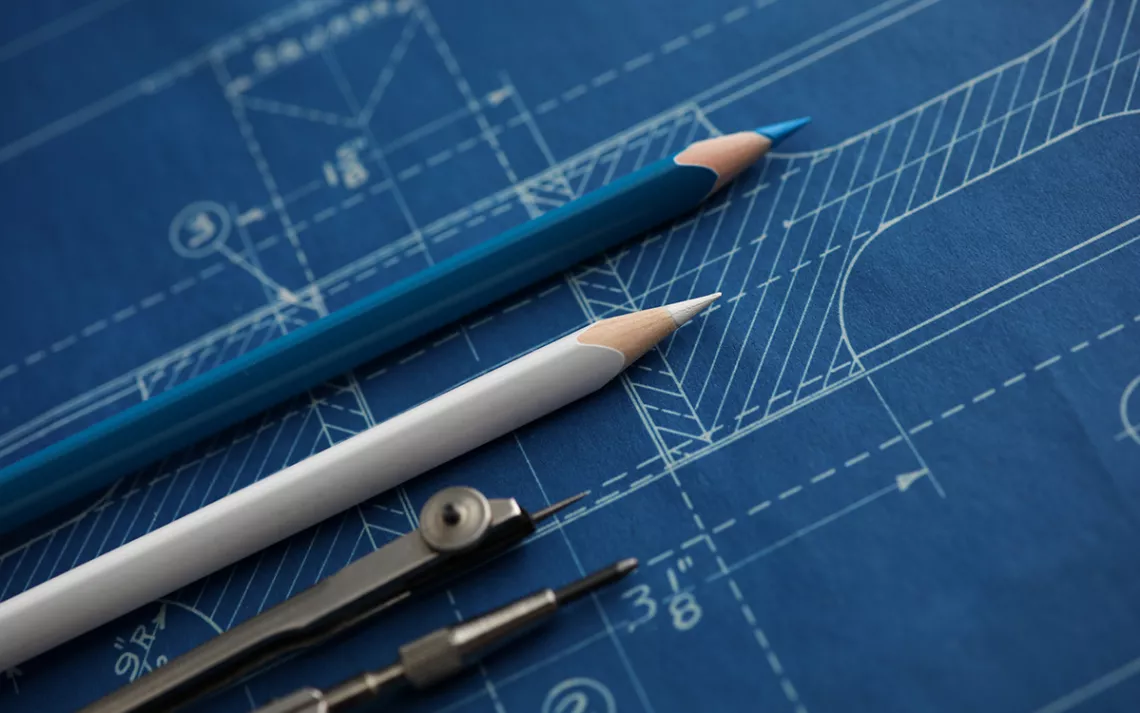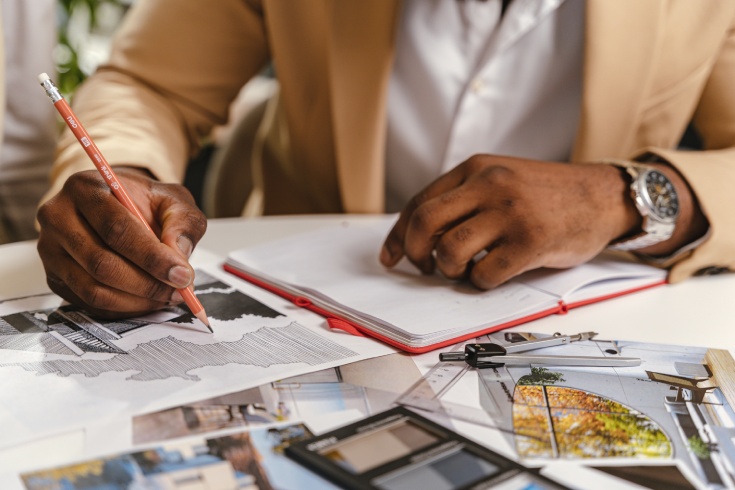Architect Rules for Designing Timeless Interiors
Architect Rules for Designing Timeless Interiors
Blog Article
The Function of Sustainability and Modern Technology in Modern Architect Practices
Sustainability and modern technology are improving modern style in means you could not anticipate. By accepting green products and wise developments, architects are not simply producing buildings; they're crafting settings that improve our lifestyle. This shift isn't almost looks or performance; it has to do with creating an accountable approach to our world's future. What's driving this change, and just how can these modifications impact your area?
The Value of Sustainable Style
Lasting style is essential not just for the environment however likewise for boosting our top quality of life. When you embrace sustainable design, you're not just minimizing your carbon impact; you're developing rooms that advertise wellness and wellness.
Furthermore, sustainable style often leads to stronger neighborhoods. When structures are made with eco-friendly practices, they can inspire others to do the same, promoting a society of sustainability. You'll discover enhanced residential or commercial property values and a higher sense of pride in your surroundings.
Last but not least, by prioritizing sustainability, you're investing in the future. You're making sure that future generations appreciate a much healthier world and dynamic neighborhoods. When you consider your following project, think concerning just how lasting style can raise your life and those around you.
Innovative Materials Transforming Structure Practices
As you check out ingenious materials in architecture, you'll locate that eco-friendly building materials are improving exactly how we think of sustainability. Recycled material developments are giving brand-new life to waste, while wise material technologies improve constructing performance. These innovations not just promote eco-friendliness but additionally press the limits of style.
Biodegradable Building Products
While conventional building and construction products frequently contribute to environmental degradation, biodegradable construction materials are emerging as a viable alternative that changes structure techniques. By including naturally degradable alternatives right into your styles, you're not just enhancing aesthetic allure; you're additionally making a favorable influence on the earth. As you adjust to these ingenious products, you'll discover that they supply durability and flexibility, enabling you to create structures that align with modern values of sustainability and responsibility.
Recycled Content Advancements
Recently, ingenious materials with high recycled content have transformed building techniques, offering engineers amazing new alternatives - Architect. You can currently integrate products like recycled steel, which not just lowers waste yet likewise boasts impressive strength. Recycled glass is another great choice, giving visual charm while minimizing ecological impact

Smart Product Technologies
Smart product technologies are improving the method you consider building methods, supplying dynamic options that adjust to changing problems. These cutting-edge materials, such as self-healing concrete and thermochromic glass, improve structure performance and sustainability. Envision frameworks that can adapt to temperature level adjustments or repair themselves when damaged-- these improvements are no more simply ideas. By incorporating clever products, you can create energy-efficient designs that reply to their atmosphere, lowering total energy consumption. The ability to keep an eye on and adjust in real-time streamlines upkeep and prolongs the lifespan of buildings. As you accept these innovations, you're not simply introducing; you're adding to an extra lasting future in style, combining capability with ecological duty.
The Assimilation of Smart Technologies in Layout
As innovation develops, integrating smart remedies right into architectural design comes to be important for creating efficient and lasting areas. You can incorporate smart technologies like building monitoring systems, which maximize power usage and improve passenger comfort. Sensors can monitor ecological problems, changing lighting and temperature level instantly based on real-time data. This flexibility not just improves user experience yet additionally decreases energy intake.
Integrating Net of Things (IoT) gadgets permits for seamless interaction amongst different structure systems, allowing you to make data-driven decisions that boost functionality. Smart products that reply to ecological changes can additionally enhance your style, providing dynamic options to ever-changing problems.
Energy Performance and Renewable Resource Solutions
While several architects concentrate on aesthetic appeals, focusing on energy performance and renewable resource solutions is crucial for sustainable design. You can begin by incorporating passive solar style, which optimizes natural light and warm, reducing dependence on artificial lights and furnace. Make use of high-performance insulation and energy-efficient windows to decrease power loss.
Don't fail to remember concerning renewable resource systems-- mount solar panels or wind turbines to produce clean power on-site. You can likewise take into consideration integrating geothermal home heating and cooling systems for a more lasting temperature policy.
By choosing energy-efficient home appliances and illumination, you'll not just minimize power consumption however additionally reduced operational expenses for building occupants.
Incorporating these concepts right into your styles not just benefits the setting yet additionally improves the building's appeal and worth. Inevitably, your dedication to energy efficiency and eco-friendly power will set your tasks apart in an open market.
Water Preservation Techniques in Modern Architecture
Including water preservation techniques right into contemporary architecture is important for creating lasting buildings that minimize ecological impact. You can attain this by incorporating rainwater harvesting systems, which store and accumulate rain for watering and non-potable uses. Implementing low-flow components and smart watering systems additionally minimizes water consumption, ensuring reliable usage throughout the structure.
Think about using drought-resistant landscape design, which requires less water and advertises biodiversity. Integrating absorptive paving products allows rainwater to infiltrate the ground, reducing drainage and charging groundwater supplies.
Furthermore, installing greywater recycling here systems can repurpose water from sinks and showers for bathroom flushing or irrigation, more saving sources.
The Impact of Biophilic Style on Health
Biophilic layout brings nature indoors, and you'll discover its favorable impacts on your wellness and happiness. By enhancing click here indoor air top quality and attaching you with natural environments, these areas can change your day-to-day experience. Allow's discover how integrating these features can increase your general health.
Nature's Impact on Health
When you include components of nature right into your surroundings, it can considerably enhance your psychological and physical health. Biophilic layout, which highlights natural light, plants, and natural materials, cultivates a sense of connection to the outdoors. Accepting biophilic design is an action toward a healthier lifestyle.
Enhancing Indoor Air Top Quality
While several individuals focus on looks and capability in layout, enhancing indoor air high quality plays a necessary duty in your total health. By including biophilic layout components, you can boost air top quality normally. Focusing on these facets in your layout will certainly not only elevate your space however additionally advertise a feeling of tranquility and well-being.
Connection With Natural Components
When you connect with all-natural elements in your area, you not just improve its visual appeal yet also greatly improve your health. Biophilic style urges you to incorporate functions like plants, natural light, and organic products. These elements produce a relaxing atmosphere, minimizing stress and stress and anxiety.
Future Fads in Sustainable Architectural Practices
As the globe faces pressing ecological obstacles, architects are progressively welcoming ingenious techniques to sustainability that redefine just how we design and develop. You'll see a rise in biophilic layout, integrating nature into metropolitan rooms to boost well-being and decrease power intake. Smart technologies, like AI and IoT, are improving energy administration in structures, maximizing source usage, and minimizing waste.
Furthermore, modular building is getting grip, permitting faster, more efficient building processes while lowering ecological influence. Using lasting products, such as redeemed timber and recycled steels, is coming to be standard practice. As you explore these trends, anticipate a change towards round style, highlighting the lifecycle of materials and promoting reuse and recycling.
These forward-thinking strategies not only address ecological concerns yet additionally develop much healthier, much more resilient communities. By staying educated concerning these patterns, you can assist shape a sustainable future in style.
Regularly Asked Inquiries
Exactly How Can Sustainability Affect Project Spending Plans and prices?
Sustainability can significantly affect job costs and budgets. You might locate that initial financial investments in environmentally friendly products or modern technologies bring about long-term financial savings through energy effectiveness, lowered waste, and possible federal government motivations, inevitably stabilizing the total costs.
What Certifications Exist for Lasting Architecture?
You'll find several qualifications for sustainable style, consisting of LEED, BREEAM, and the Living Structure Difficulty. These certifications help you show your dedication to sustainability and can improve your project's credibility and allure to clients.
How Does Neighborhood Culture Impact Lasting Style?
Neighborhood culture forms lasting design by reflecting community products, values, and practices. You'll discover that integrating neighborhood visual appeals and practices not just appreciates heritage but also boosts the capability and acceptance of your architectural tasks.
What Function Does Customer Education And Learning Play in Lasting Practices?
Customer education's important for promoting sustainable techniques. When you notify clients regarding advantages, expenses, and ecological impacts, you empower them to make enlightened choices, promoting a collaborative technique that improves the project's general sustainability.

How Can Architects Determine the Success of Sustainability Efforts?
You can gauge the success of sustainability initiatives by tracking energy usage, evaluating product performance, and event responses from clients. Regular audits and comparisons versus standards will help you refine your approaches and display improvements effectively.
By integrating wise materials, you can create energy-efficient layouts that respond to their setting, decreasing more info general power usage.While numerous architects focus on aesthetic appeals, prioritizing energy efficiency and eco-friendly power solutions is vital for sustainable style. Biophilic style, which highlights all-natural light, plants, and natural products, cultivates a feeling of link to the outdoors. Biophilic layout encourages you to incorporate features like plants, natural light, and organic materials. As you explore these trends, expect a shift toward round layout, stressing the lifecycle of products and advertising reuse and recycling.
Report this page